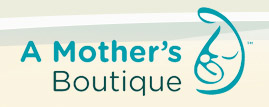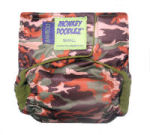Children inspire a series of discussions, sometime debates, and OK, face it, occasionally heated arguments between the most loyal and loving life partners. First comes the decision whether you are both mentally, physically and financially capable of the enormous responsibilities of parenting a child for at least 18 years. Then comes the debate of how many can you provide for, and whether to announce to anxious grandparents-to-be that you have started “trying”. The joyous absence of ever-faithful Aunt Flow leaves requires a run to the library to check out every baby naming book ever written and you and your partner navigate the potential relation-ending decision of whether to name your sweet, soon-to-be-born baby girl after Recently Departed Dear Old Great Granny Ester or after the cute blond chick, Izze, from Grey’s.
Luckily, some decisions are easy… like whether to use reusable diapers or single use diapers. No brainer, right? Disposable diapers are easier. Or are they (Velcro seems pretty easy)? Disposable diapers leak less. Or do they (Hemp seems pretty absorbent)? Disposable diapers use less water (But does that outweigh the environmental impact of human waste wrapped in plastic and sitting in a landfill for 500 years)? The Great Diaper debate has been waged since Johnson and Johnson introduced the first disposable diaper into the US in 1949. Recently, the Environment Agency in the UK published an Updated LifeCycle Report, confirming that the ability to line dry cloth diapers, wash at reasonable water temperatures and reuse the same set of cloth diapers on more than one child made cloth diapers the more environmentally-responsible choice.
Luckily for today’s parents, cloth diapering has evolved from the first mass produced cloth diapers in 1887. Modern cloth diapers are easy to use, can be laundered at home, have a high resale value on auction sites such as Ebay and Craig’s List, and are available in a variety of styles and fabrics to fit every family’s fashion sense and finances.
Flat or Prefold Diapers: Resembling the original cloth diapers that have been used since the 1800’s, Flat and Prefold cloth diapers are square or rectangular pieces of fabric that are folded and secured around baby. Flat diapers are a single layer of fabric cut into a square, and prefold diapers are a rectangle divided into thirds with additional layers of the fabric in the center panel where baby wets. Replacing giant (and intimidating) safety pins that held traditional diapers in place is the Snappi® fastener – a t-shaped stetchable, non-toxic design with teeth to grip the fabric on each of the three ends. A snug fitting diaper wrap may be used to hold the diaper in place instead. Available in bleached cotton, unbleached cotton, organic cotton and hemp, flat and prefold diapers are an ultra cost effective option. Ranging in price from $1-$8 each and available in preemie, newborn, infant and toddler sizes, these diapers require a waterproof diaper cover to keep baby’s clothing and crib dry. They are fast drying, but have a longer than average learning curve to perfect folding techniques. Without elastic around the legs, flat/prefold diapers are more prone to leaks and blowouts.
Contour Diapers: Hourglass shaped fabric is cut to eliminate tricky folds, while maintaining a simple, usually single layer, trimmer fitting diaper – narrow between the legs to reduce bulk with wide wings to wrap comfortably around baby’s waist. Thicker, plush cotton or hemp fabric is more absorbent with less bulk than flat or prefold diapers, and the hourglass shape makes it easy to put on baby. Some contour diapers have an additional diaper doubler sewn into the center of the diaper for added absorbency, without increasing the overall thickness of the diaper and prolonging the drying time. Contour diapers require a Snappi®, snug fitting diaper wrap, or diaper pins to hold it in place, as well as a waterproof diaper cover. Faster drying time and a shorter learning curve than flat or prefold diapers, but still prone to leaks without elastic at the legs. Reasonably priced at $7-14 each, they are usually sold in two sizes.
Fitted Diapers: Shaped to cradle baby’s bottom with added elastic at the legs to contain messes and attached Velcro or snap closures at the waist make them easier to use than flat, prefold or contour diapers. Moderately priced at $6.50-17.50 each, fitted diapers are usually sold in three sizes, and are available in cotton, organic cotton, and a hemp/organic cotton blend. Considerably thicker (and more absorbent), fitted diapers take a substantially longer time to dry than contour, prefold or flat diapers. Fitted diapers require a waterproof diaper cover to keep clothing and cribs dry, but do not need additional external fasteners. Fitted diapers are an exceptional starter potty training pant, providing superior leak protection while still allowing your toddler to feel wet.
Pocket Diapers: Shaped diapers with elastic legs, attached Velcro or snap waist fasteners, plus an attached outer waterproof layer and (usually) an attached stay dry inner layer make pocket diapers very easy to use. The back waist seam is left open to create a pocket between the outer waterproof layer and the inner (usually stay dry) layer, where an absorbent pad is inserted. Pocket diapers are meant to be changed completely with each diaper change – not just the insert (even though the stay dry layer may feel dry, urine has soaked through it). The pocket opening results in super fast drying times but longer assembly times, and provides tremendous versatility. Heavy wetter soaking the crib sheets after 12 hours overnight? Simply switch the absorbent pad from microfiber to hemp, or insert two pads instead of one. The attached waterproof layer is synthetic, as is the stay dry inner, but organic cotton inners are available. At $16-$21 (with absorbent inserts often sold separately), pocket diapers are sold in at least three sizes and are one of the more expensive cloth diapering options. Many pocket manufacturers offer specially sized inserts to fit their brand of pocket diaper, and due to narrower or wider crotch widths, some inserts are not inter-changeable with other brands of pocket diapers. Flat, prefold or contoured diapers often make excellent, inexpensive pocket diaper inserts.
All-in-One Diapers: Shaped diapers with elastic legs, attached Velcro or snap waist fasteners, an attached outer waterproof layer, (usually) an attached stay dry inner layer add one element to the pocket diaper – a sewn-in absorbent pad – resulting in the easiest of all cloth diapering options. Comparable to disposable diapers in terms of ease of use, AIO diapers are a single unit that is easy to secure and doesn’t require any additional parts, making it a great option for dads, babysitters, travel, and daycare. The attached waterproof layer is synthetic, as is the stay dry inner, but organic cotton inners are available. Ranging in price from $9.50-$23.00 and available in at least three sizes, All-in-One diapers are one of the most expensive diapering options. AIOs are very trim fitting, but the sewn-in absorbent layer requires one of the longest drying times.
One-Size Diapers: Ultra-modern diapers with elastic legs, attached waist fasteners, (usually) attached outer waterproof layer, (usually) attached stay dry inner layer and adjustable rise successfully balance cost with ease to use. Designed to fit babies 7-35 lbs with either a snap down rise or cinching leg elastic, one set of 3 dozen one-size diapers generally last a child from birth to potty training. For the uber-green parent, one-sized diapers are the show stopper. Instead of wasting 4000-9000 disposable diapers, eco-responsible parents can diaper a single child with 36 diapers at a cost of $18-$35 each. One-size diapers are available in a variety of styles – from AIOs to fitteds, with pocket diapers being the more widely used. The Pros/Cons of each style are the same as previously mentioned in each category. The added benefit of only having to buy one set of diapers instead of 2-4 sizes brings the overall cost closer to prefolds and covers and considerably less than sized cloth diapers. Laundering the same set of diapers every three days for 2.5 years means the one-size diapers will likely only diaper one child. Whereas, sized diapers can often last through multiple children, as they are used for a shorter period of time before the baby outgrows each size.
At a cost of $0.15-0.35 each, throwaway diapers cost families an average of $2000 per child and comprise the third largest component of US landfills. Slightly more kind to the earth than conventional single-use diapers, unbleached and flushable/compostable disposable diapers cost an average of $0.10 more per diaper than conventional bleached diapers, putting them out of reach for most families impacted by the current economic crisis.
Available in a myriad of styles to fit every lifestyle, fabrics to fit every personality, and price ranges for any budget, reusable cloth diapers are the fiscally-responsible and eco-responsible choice among today’s modern-chic parents.
For more information on Modern Cloth Diapers, visit Modern Mommy Gear‘s Cloth Diaper College:
Robin K.P. Morris, founder of Modern Mommy Gear the go-to online store for today’s modern-chic, eco-responsible mom. The store is the one-stop source for eco-responsible family gear from cloth diapers to baby carriers. Driven by a commitment to help families leave the planet a better place, Modern Mommy Gear offers the eco-responsible, green gear to keep families happy and the planet healthy. For more information or to start shopping, visit www.modernmommygear.com.












[…] Cloth Diapering Basics- A Detailed Crash Course : Mommy News Blog A snug fitting diaper wrap may be used to hold the diaper in place instead. Available in bleached cotton, unbleached cotton, organic cotton and hemp, flat and prefold diapers are an ultra cost effective option. … […]
Thank you for such comprehensive intro to cloth diapering. We’re considering trying out the All-In-Ones.
[…] that you can reuse (unless you’re really recycling those napkins and paper towels) • Switch to cloth diapers • Start a compost bin for unused foods that can be transferred to a garden, killing two birds […]